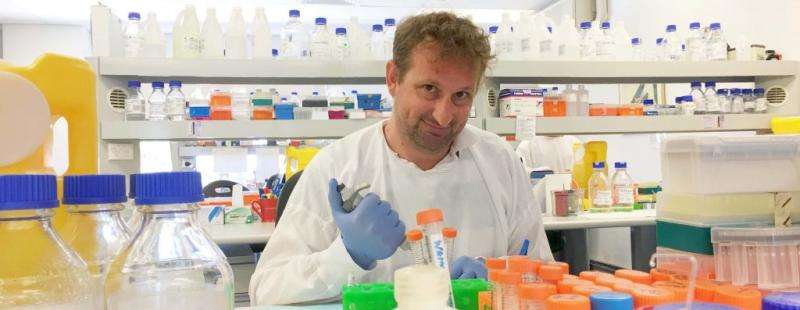Early intervention may be possible for Parkinson's disease

One of the largest post-mortem brain studies in the world has confirmed that a protein (LRRK2) associated with the development of Parkinson's disease is increased in the pre-symptom stages, leading researchers to believe they may be able to treat the disease sooner.
A mutation of the LRRK2 gene is found in people with a family background of Parkinson's disease (PD) and is a known genetic contributor. The study found that there are increased levels of LRRK2 in the pre-symptomatic stages of PD, suggesting that this may be an appropriate time to administer pharmaceutical therapies.
Previous studies have shown that PD-associated genetic mutations increase the activity of LRRK2, and that this activity can be reduced by drug therapies.
"We focused on this protein in particular because it holds a lot of promise, and there is currently a bottleneck in known facts about it," says Dr Nicolas Dzamko from Neuroscience Research Australia (NeuRA).
"This study has given us the most comprehensive picture to date of what is happening with the LRRK2 protein in the brains of people with Parkinson's disease. There are drugs in development that can act on LRRK2's activity, but we need to know when to give them to people and which people will most benefit from it."
Dr Dzamko's team at NeuRA collaborated with scientists who specialise in PD from research institutes in London, Tokyo, Amsterdam and Sunnyvale, California to map the expression of LRRK2 in the brain.
"We've used a large sample size for each area of the brain that we analysed. Different parts of the brain are affected differently by PD, so we have an even better understanding of where LRRK2 can be found in the brain and at what levels and how these are changed by Parkinson's disease."
Treatments are expected to be of benefit to people who have the familial form of PD caused by the genetic mutation of LRRK2, but may also work on those who have idiopathic PD, whose cause is unknown. This work will help with planning the clinical trials of LRRK2-blocking drugs that are currently under consideration.
Parkinson's disease is a movement disorder that affects an estimated 10 million individuals worldwide – 70,000 in Australia. Thirty-two people are diagnosed with the disease in Australia every day. PD causes trembling, stiffness, slowness of movement and a loss of fine motor control.
More information: Nicolas Dzamko et al. LRRK2 levels and phosphorylation in Parkinson's disease brain and cases with restricted Lewy bodies, Movement Disorders (2016). DOI: 10.1002/mds.26892

















